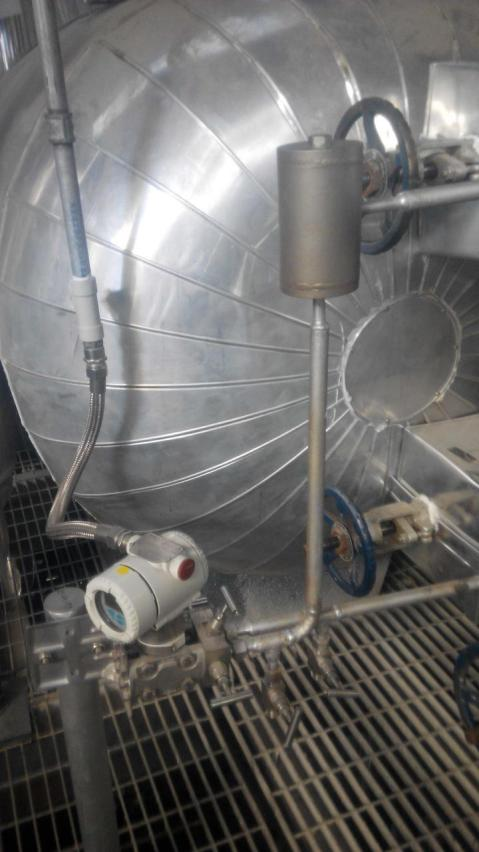Difference between Fuji double flange differential pressure transmitter and Fuji differential pressure transmitter
The double-flange differential pressure transmitter is a modern pressure measuring instrument that integrates many fields. With its outstanding corrosion resistance, dirt resistance, high precision and high stability, its application in various industrial production has gradually been broadened. This article combines the practical experience of many instrument engineers, in order to ensure the long-term stable operation of the double flange differential pressure transmitter, introduces various types of installation and selection required in the process of flow and liquid level measurement. Various considerations for scenarios where professional knowledge and skills are matched.
When measuring the liquid level, the double-flange liquid level gauge needs to pay attention to the principle that according to the physical medium pressure formula P=phg, the pressure on a horizontal cross-section in the container is proportional to the density of the medium and its height. The pressure transmitter detects the pressure somewhere and can calculate the height of the liquid level or interface.

In the production process, liquid level control is generally used as a process control parameter, which requires high reliability and stability of the detection instrument, but low precision; and the density of the medium is basically stable, so the use of double flange transmitter or pressure variable The transmitter detects the pressure at this point, which can directly reflect the liquid level at this point.
Because in liquid level measurement, the requirement of precision value does not need to reach extremely high precision, the shortcomings of flange diaphragm type differential pressure transmitter compared with traditional pressure pipe connection type differential pressure transmitter are also eliminated. Oil refineries and chemical plants and more and more flanged liquid level transmitters have basically replaced differential pressure liquid level transmitters. In oil refineries and chemical plants, the working conditions are complex and the reliability of the instrument is very high. Where required, you will see more places where double flange differential pressure transmitters are used. It is typically used in the measurement of liquid level process parameters of various horizontal tanks and towers. Such as fractionation tower liquid level, reflux tank liquid level, raw material tank liquid level, bubble liquid level, etc., the following matters need to be paid attention to when selecting.
1. Medium temperature, because the capillary and the medium are only separated by a membrane, the temperature of the medium can easily affect the filling liquid in the capillary, so the selection of the filling liquid should be based on the process medium temperature. Under the silicone oil filling liquid and high temperature and low temperature silicone oil filling liquid.
Moreover, the density of different filling fluids is also different, so attention should be paid to the calculation of negative migration.
At the same time, it should also be noted that when using high-temperature-resistant filling liquid, because the viscosity of high-temperature filling liquid is also large, the accuracy of the measurement structure will be affected when the environment is lower than that temperature, and a reasonable choice must be made according to the situation. .
2. Corrosion resistance, choose different diaphragm materials according to the corrosive characteristics of the process medium. In the refinery, 31 6L material is generally used to meet the application. When it contains HCl4, the diaphragm needs to be plated with gold.
3 Measuring range
The measurement range is greater than 15m. In order to reduce the influence of the lag in the transfer of the filling fluid, try to choose a wool tube with a large inner diameter.


